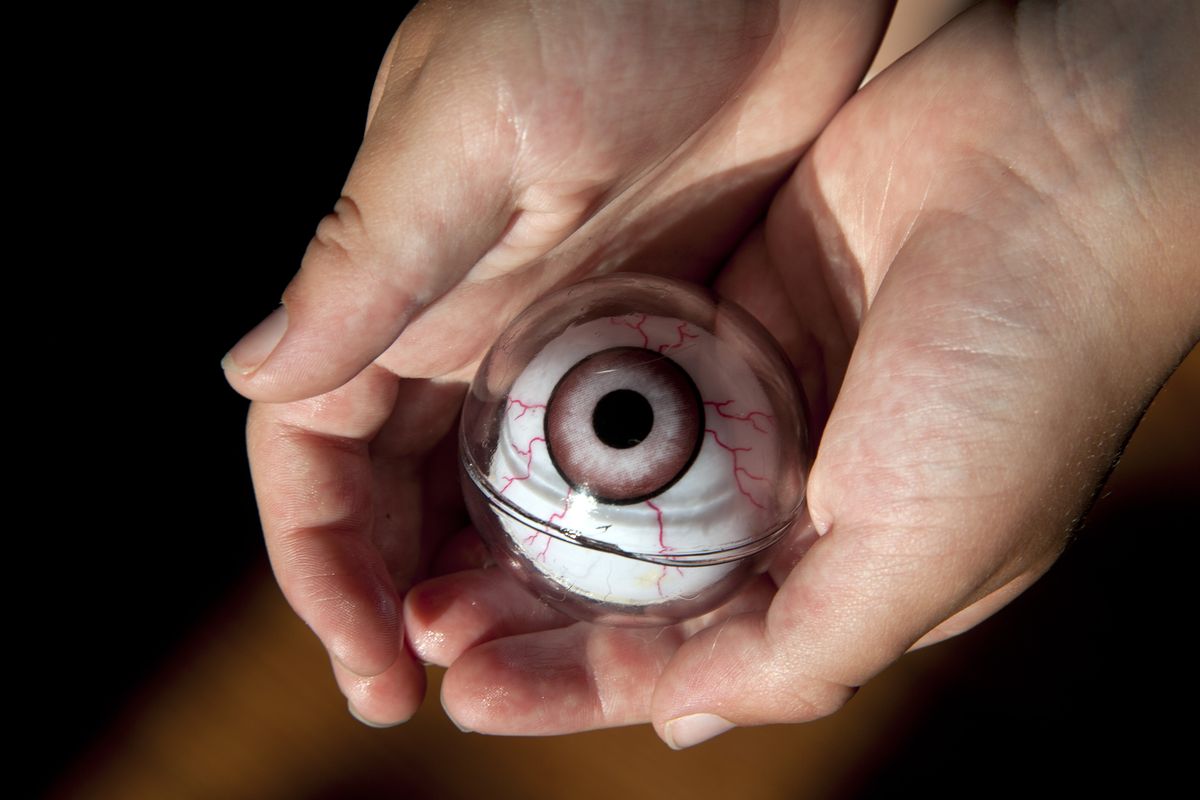Leaking Halloween toy injures boy’s eye
Mom hopes to get word out about possible danger of ‘eyeball-glide toy’
Mike Mitchell, 5, was playing with a Halloween toy eyeball when it leaked what is thought to be kerosene into his right eye on July 13 in Spokane. His mother, Heidi, left, flushed the eye with water and rushed him to the emergency room for treatment. (Dan Pelle)Buy a print of this photo
A Spokane mom is looking for answers after her 5-year-old son was injured by a popular Halloween toy that has been recalled multiple times.
Heidi Mitchell’s son Mike was playing with a glow-in-the-dark toy eyeball Saturday evening when it cracked on a linoleum floor. When Mike held the toy up to his face, some of the fluid inside leaked into his eye.
“He started screaming, screaming, screaming,” Heidi Mitchell said.
She rushed Mike into the bathroom and began flushing his eye with water. Only after an emergency room iodine test did the Mitchells suspect kerosene was the culprit, based on the texture and smell of the liquid. The heating oil, popular in its purple-dyed form on campsites and as lantern fuel, can cause burns on contact with skin and is potentially fatal if swallowed.
Mitchell thinks kerosene caused Mike’s injury because similar products have been recalled in the past. Those toys used the petroleum extract as the agent that allows a fake pupil inside the eyeball to float freely. A version of the “eyeball glide toy,” as it is generically known, produced by Houston-based Hepkat Provisioners is promoted with the tagline, “It always stares at you!”
“The reason a company would use a petroleum distillate is because it doesn’t freeze, and it doesn’t collect fungus,” said U.S. Consumer Product Safety Commission spokeswoman Nikki Fleming.
Rich Ockwell, director of sales and marketing at Sumner, Wash., based toy dealer Toysmith, said the product has gained somewhat of a reputation over the years for mishaps having to do with lubricants that didn’t adhere to federal safety standards. In 1998, more than 400,000 toys distributed by the Fort Lauderdale offices of Atico International were recalled for containing kerosene. They included eyeballs and toys designed with a smiley face. Nine years later, a Texas company called Gemmy Industries took about 500 of its kerosene-filled products off the market.
While tests have become tougher for children’s toys since passage of 2008 federal consumer safety legislation, Ockwell said he couldn’t rule out that a product with a potentially dangerous liquid could make it to store shelves.
“If somebody’s doing something that’s noncompliant, that’s bad for everyone,” Ockwell said. Toysmith has considered discontinuing the product because of bad press generated by companies that don’t adhere to their quality standards, he added.
Toysmith spends millions of dollars annually testing its products to make sure they are safe for kids, Ockwell said.
Glide toys are tested for flammability and undergo what Fleming called a “drop test” to ensure the product won’t crack under regular play conditions. Federal law also requires labeling that would inform parents to discard the product if damaged and to keep the toy’s parts from being consumed.
Mike’s toy was a gift from a grandparent who doesn’t remember where it was bought, Heidi Mitchell said. The only clue on the cracked plaything is the word “China” printed on its underside.
Mike is recovering after an emergency room visit, receiving ointment treatments a couple times a day. Doctors credited the immediate eye-flushing for preventing permanent damage and expect a full recovery. But Heidi Mitchell wants to get the word out to keep similar accidents from plaguing families in the area who may also have received the toy without warning of what floated inside.
“If I could get something off the shelves that would hurt somebody else, that’s success to me,” she said.

